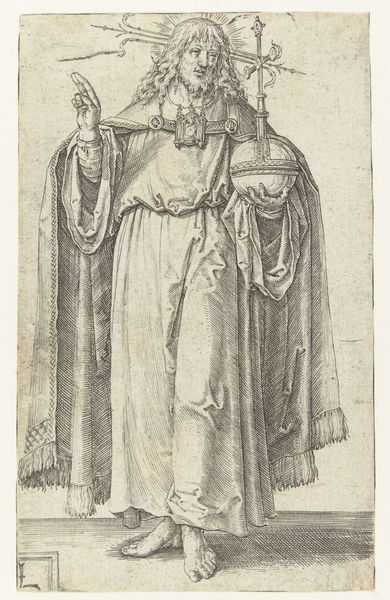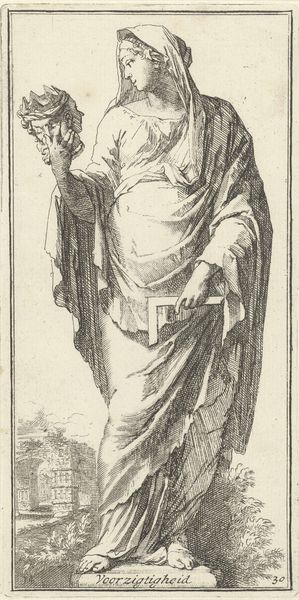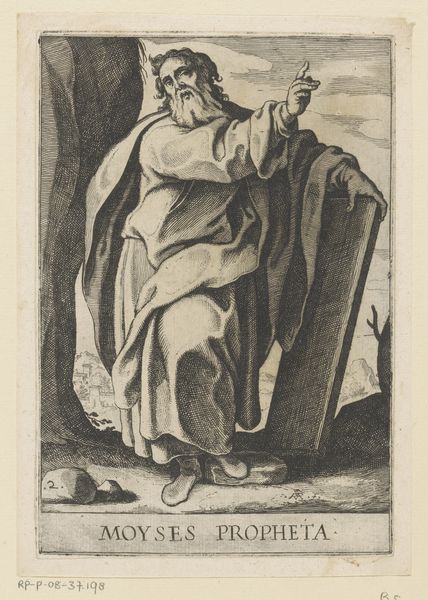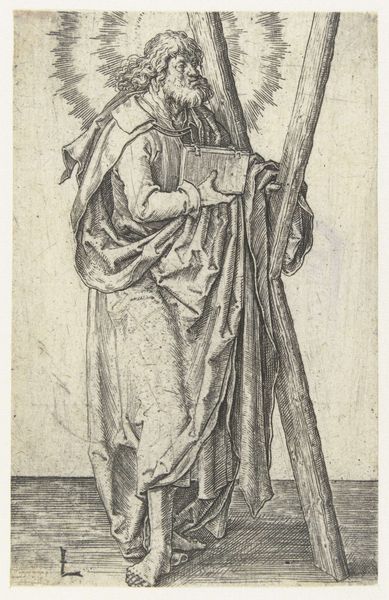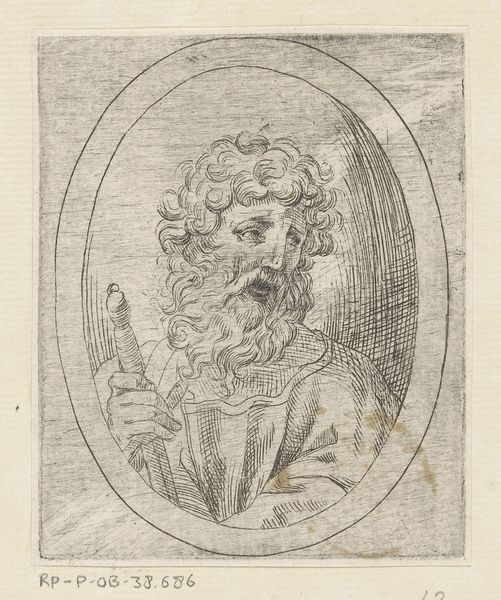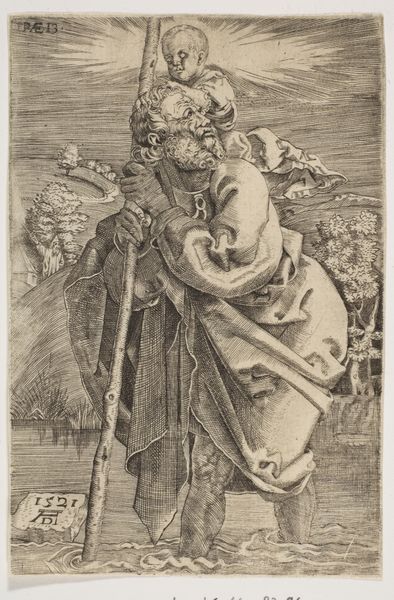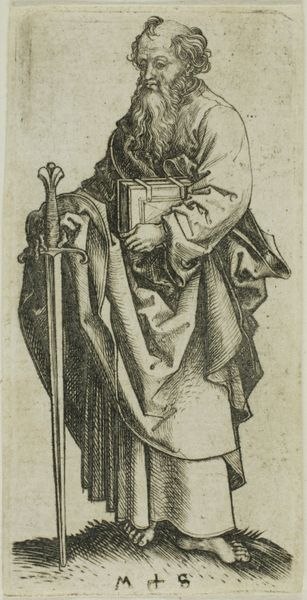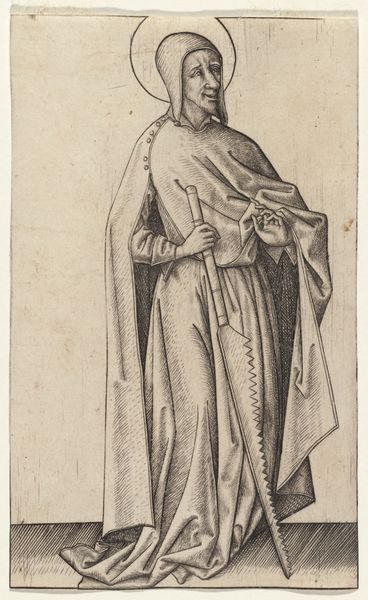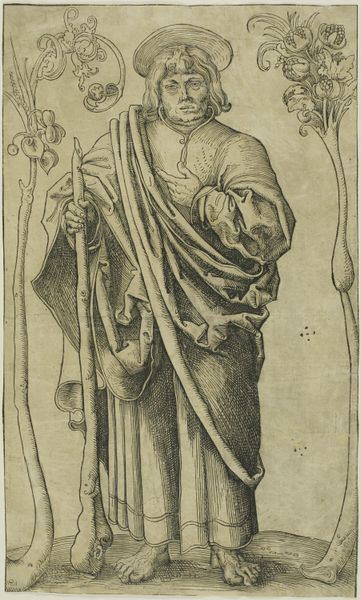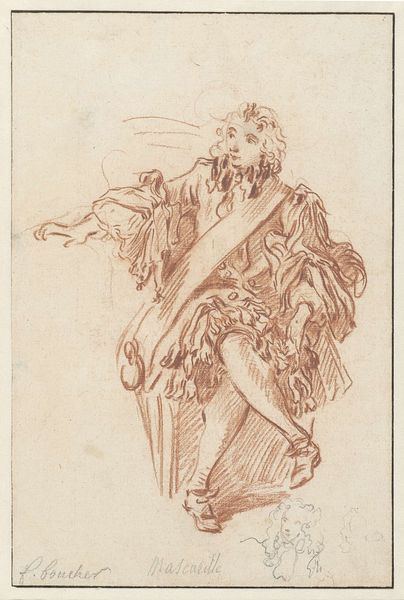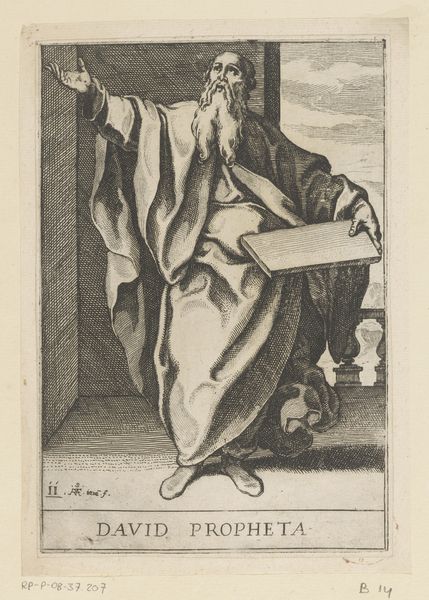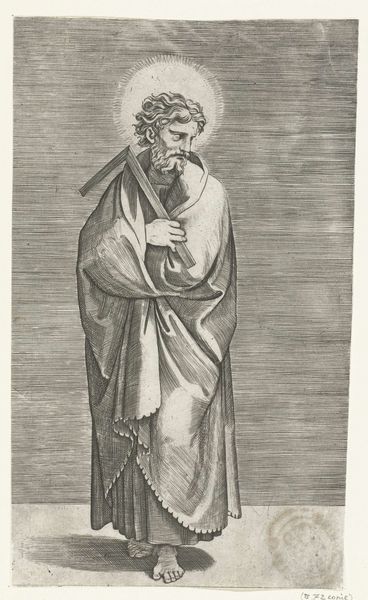
Study for the Prophet Jeremiah (recto); Studies of a Horse Seen from Below and of a Man Seated on a Chair, Probably a Self-Portrait and an Off-Print in Brown Ink of a Nude Female Abdomen and Legs (verso) 1764 - 1770
0:00
0:00
Dimensions: 14 7/8 x 6 5/8 in. (36.7 x 16.9cm)
Copyright: Public Domain
Editor: This is Henry Fuseli's "Study for the Prophet Jeremiah," a drawing and print in ink from somewhere between 1764 and 1770. It's at the Met. The figure is so dramatic, with his flowing robes and raised arm, almost theatrical. What’s your take on it? Curator: It's important to view Fuseli within the context of late 18th-century Romanticism, particularly its engagement with history painting. How does the visual depiction of Jeremiah, through Fuseli's distinct Romantic lens, deviate from, say, earlier depictions of prophets during the Renaissance? Editor: Well, this Jeremiah feels much more intense and personal. Renaissance depictions often feel more idealized. Curator: Precisely! And consider the historical context. Fuseli's artistic decisions regarding Jeremiah directly speak to the era's anxieties, reflecting the socio-political upheaval and revolution occurring then. Does the exaggerated emotion, do you think, serve to elicit empathy or perhaps inspire a certain form of political consciousness within the viewer? Editor: I think it's meant to inspire awe and maybe a sense of impending doom. He looks like he’s about to break something over his head! Curator: The choice of Jeremiah as a subject, at this specific moment in time, makes it such a striking piece. Remember, Romanticism engaged with these historical and religious figures to question contemporary power structures, inviting viewers to critically examine the present. What’s your understanding of that? Editor: It sounds like Fuseli is using the past to comment on his own time. Thanks, that helps a lot in seeing how the piece reflects that. Curator: Absolutely. Recognizing that art exists within and is shaped by socio-political and cultural circumstances adds depths to our understanding of even the most seemingly straightforward image.
Comments
No comments
Be the first to comment and join the conversation on the ultimate creative platform.


